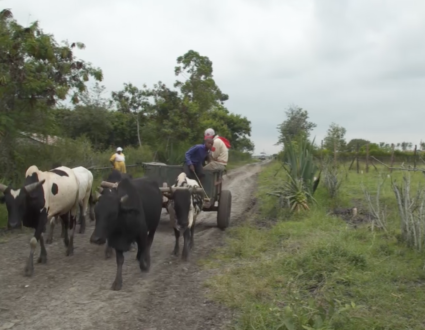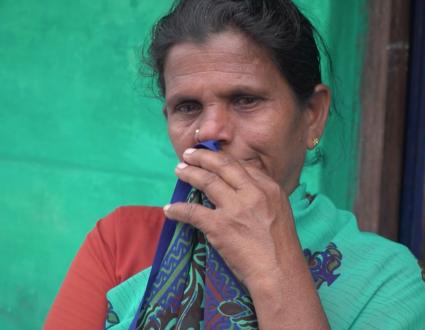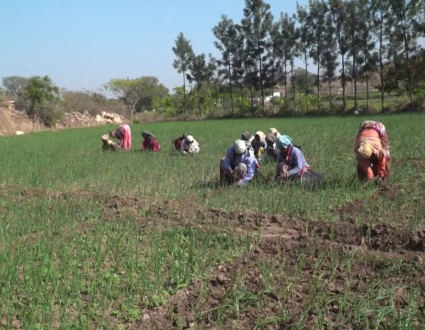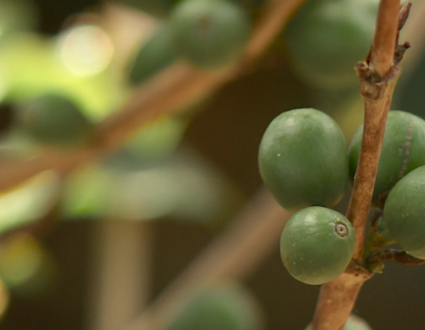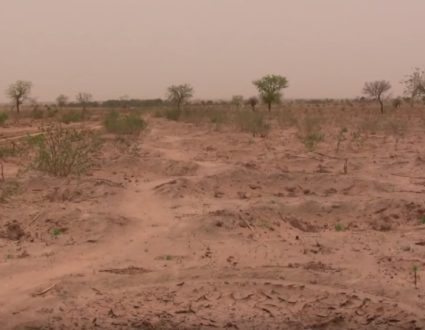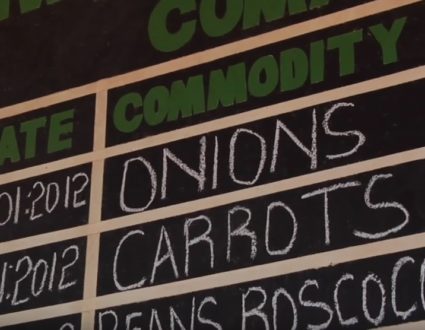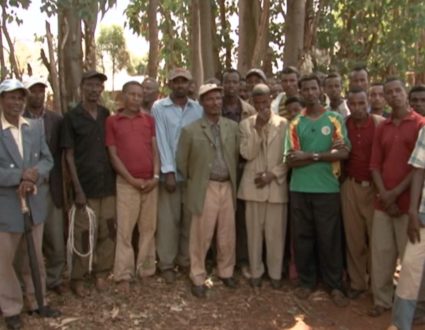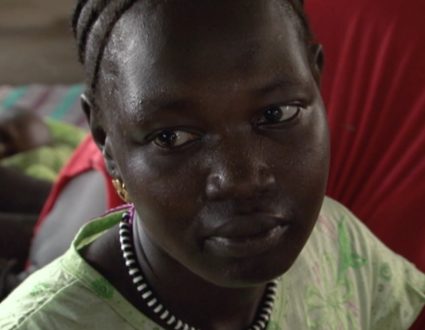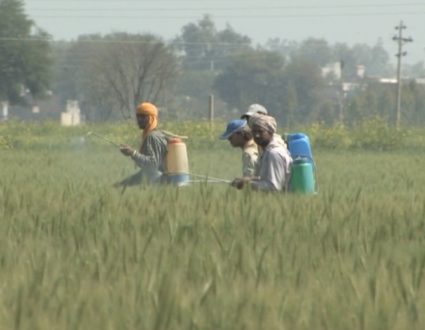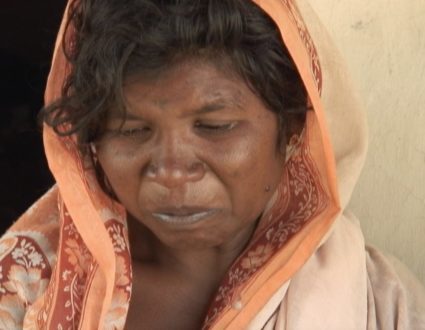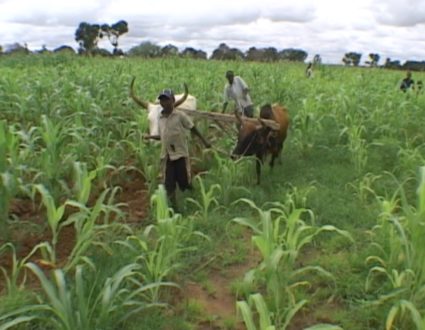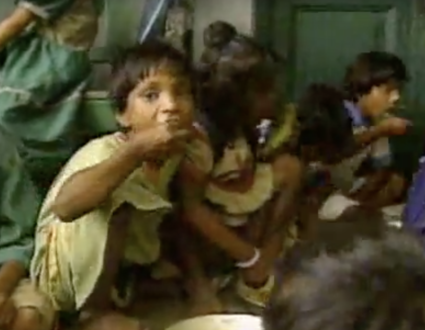- Amna Nawaz:Well, record-breaking drought continues to scorch wide swathes of sub-Saharan Africa, from Somalia in the east to Niger in the West. Humanitarian groups say tens of millions of people are going hungry and conditions are being made worse by the ripple effects of Russia’s war on Ukraine.Correspondent Fred de Sam Lazaro has our report from one of the worst-affected countries, South Sudan, where nearly two-thirds of the population face acute hunger.
- Fred de Sam Lazaro:By many measures, South Sudan is one of the worst places on earth to be a child. Vivid reminders of this greet workers who actually measure the fragile arms at this nutrition center in the capital, Juba. Almost every infant checks in, in the red zone, severely malnourished.On the day we visited Christine Dire brought in her 2-year-old daughter, Esther, a 2-year-old who weighs 11 pounds, she says. That’s less than half the normal weight range for her age.
- Christine Dire, Mother (through translator):There was no food for us in the house. So this child got anemic. And they told me that she was malnourished.
- Fred de Sam Lazaro:Jacqueline Marco was here with her 8-month-old, Rose Jima.
- Jacqueline Marco, Mother (through translator):I am breast-feeding, but there is not enough milk. Sometimes, the whole week, there’s no food. We have to go to the neighbors and ask for food.
- Fred de Sam Lazaro:Does she know how much Rose Jima weighs?Two kilos. So that’s 4.5 pounds for an 8-month-old child.
- Fred de Sam Lazaro:It’s very likely she weighed more than that as a newborn.
- Mesfin Loha, Country Director, World Vision:Malnutrition, especially at some such a young age, especially under 2 years of age, cause significant cognitive challenges. Neurological development, cognitive development and all is affected.
- Fred de Sam Lazaro:Dr. Mesfin Loha is the country director for World Vision, a large Christian charity that contracts with the United Nations to deliver services here.So the future of South Sudan in so many ways is quite literally shriveling away.
- Mesfin Loha:Without urgent support to turn the tide of this devastation, it is going to be a big problem.
- Fred de Sam Lazaro:The children’s struggle could be a metaphor for their young country. Born a decade ago after a long separatist war, South Sudan has been battered by unrelenting civil conflict. More than two million of its citizens remain refugees in neighboring countries, and a similar number have been driven into crowded camps, overwhelming those trying to provide assistance.The supply of basic foodstuffs has dwindled in warehouses like these, as the U.N.’s World Food Program has run out of money to restock them. And the WFP has had to reprioritize, as one official put it, taking away food from the hungry to feed the starving.
- Sibonakaliso Mpala, World Vision:There’s nothing as difficult as trying to convince someone who is hungry that there’s someone who is hungrier, and that you need to prioritize someone else.
- Fred de Sam Lazaro:Sibonakaliso Mpala is with World Vision’s facilities in the northern town of Malakal, a region where the small farmers have seen their livelihoods devastated by erratic weather in recent months.All around this soggy camp, the land remains waterlogged and many people fear there is a lot more rain on the way.
- Sibonakaliso Mpala:We’re seeing the effects of climate change right at the front, because we do have cyclic drought. And then, more recently, we’ve been seeing worsening flooding. The effects really affect the ability of the communities to cope. They cannot cultivate.
- Fred de Sam Lazaro:So, instead of scaling up, you’re actually scaling down?
- Sibonakaliso Mpala:We’re scaling down.
- Fred de Sam Lazaro:Across the country, internal refugees, like Nyaluak Gai, who heads a household of seven children, have been forced to live with less, much less.When we visited early this August, she showed us her monthly rations, sorghum already half gone, cooking oil fast running out, and some beans, all gone, and a lot of August still to go.This is sufficient for one meal a day for 10 days. So, what do you do for the rest of the time?
- Nyaluak Gai, South Sudan:Whenever this runs out, we go to the bush to look for wild fruits or bring in firewood for sale. And we can use that little money we get from selling firewood to buy other food in the market.
- Fred de Sam Lazaro:Rounding up the perfect storm with conflict and climate change, the war in Ukraine. It sent prices soaring for fertilizer, fuel, and food, hitting big buyers like the World Food Program and small ones like Jane Kiden, who have beaten the odds and eked out a life outside of camps.
- Jane Kiden, Mother (through translator):Now in the market, things are very expensive, and I cannot afford to buy food for my children.
- Fred de Sam Lazaro:She belongs to a group that tends a community garden, one way to cope with the scarcity. A single mother of eight, Jane Kiden also does domestic work around town when she can find it.We visited early the next morning as she prepared a pot of porridge made from fermented sorghum. It is rich in carbohydrates and protein, but there is just one cup per child to last the whole day, or, if she doesn’t find work, until the next morning. Another lost dream, Jane was forced to pull out three of her six school-age children.
- Jane Kiden (through translator):I wanted all my children to go to school. I tell them I can’t send them all because of the money. Of course, they keep quiet, but, deep down, I know they are not happy.
- Fred de Sam Lazaro:Nine-year-old Adiyah is one of the lucky siblings. She attends a nearby school, with no frills, no school lunch and no guarantee her mother can continue to pay her tuition of about $100, paid over the school year.It is the same uncertainty at the nutrition centers. The World Food Program says it expects supplies of this protein-rich paste, intended for severely malnourished children, to run out by the end of August. It is all the more painful, given how effective the simple nutrition therapy can be; 10-month-old Ivan has been on it for three weeks and was brought in by his mother, Evelyn Juri, for a follow-up check.A relief, a green light for a moment of simple happiness that his mother feels may be all too fleeting, as she awaits word on whether her baby’s care package may be the last one in a while.
- Evelyn Juri, Mother:It’s why my child is a little bit better than before. But if it’s gone, he goes back to where he was.
- Fred de Sam Lazaro:In July, the U.S. government added $117 million in emergency aid for South Sudan. Even with that, the U.N. says it is it has raised barely a third of what’s needed here, in a world beset by humanitarian crises and blindsided by the one in Ukraine.For the “PBS NewsHour,” this is Fred de Sam Lazaro in Juba, South Sudan.
- Amna Nawaz:And Fred’s reporting is a partnership with the Under-Told Stories Project at the University of St. Thomas in Minnesota.
A Perfect Storm
Conflict and Climate change
Record-breaking drought continues to scorch wide swaths of sub-Saharan Africa, from Somalia in the east to Niger in the west. Humanitarian groups say tens of millions are hungry and conditions are being made even worse by the consequences of Russia’s invasion of Ukraine. Our report come from South Sudan, where nearly two-thirds of the population face acute hunger.
70%
of South Sudanese
face extreme hunger this year
face extreme hunger this year

Around 2 million South Sudanese live in camps
They’ve been forced there by conflict and climate extremes
Some of the most vulnerable are children
Malnutrition, especially at such a young age, causes significant cognitive and neurological challenges
Dr. Mesfin Loha, World Vision Country Director


World Food Programme warehouses don’t have enough food
Pressed by so many global crises, the money to continue food support programs here has run out
Sibonakaliso Mpala, World Vision
“There’s nothing as difficult as trying to convince someone who is hungry that there’s someone who is hungrier, and that you need to prioritize someone else.”




















